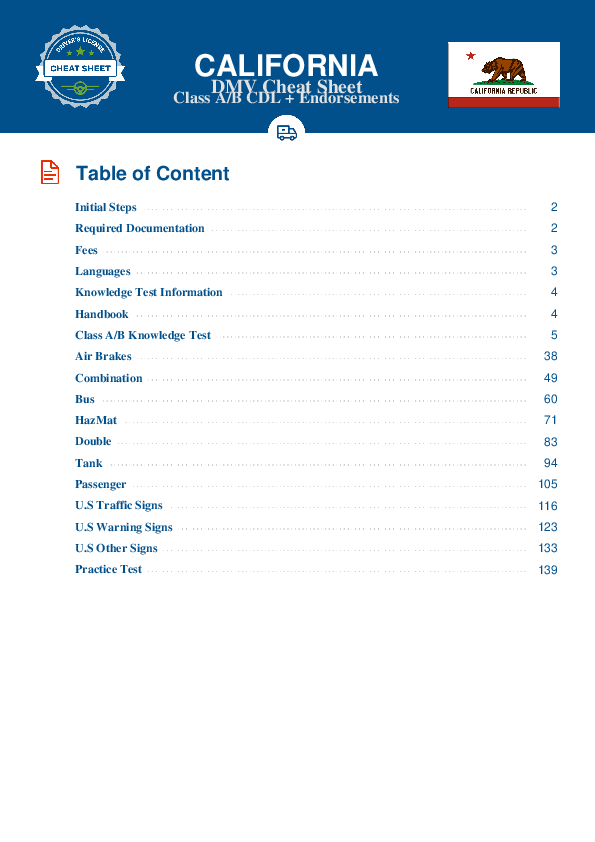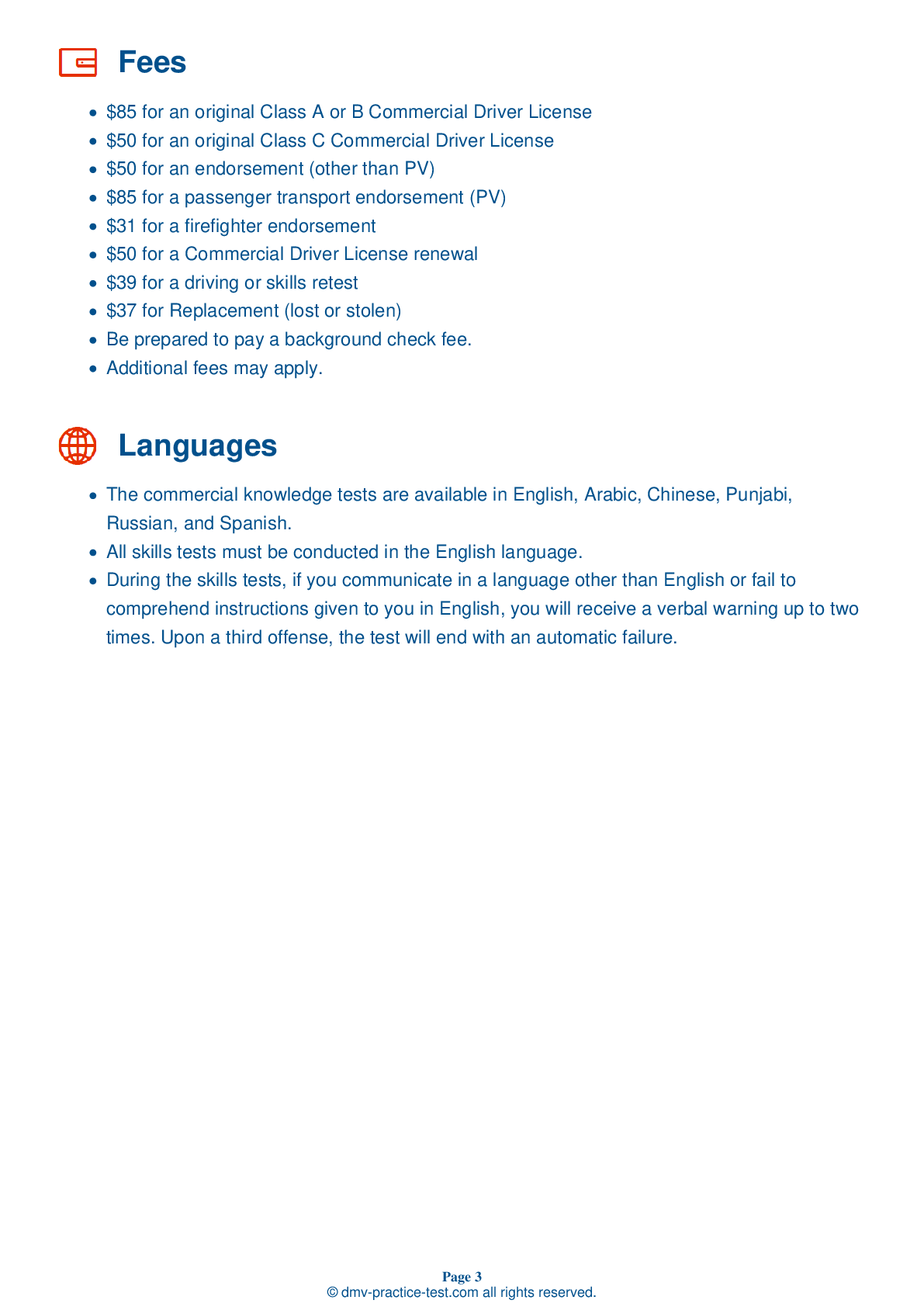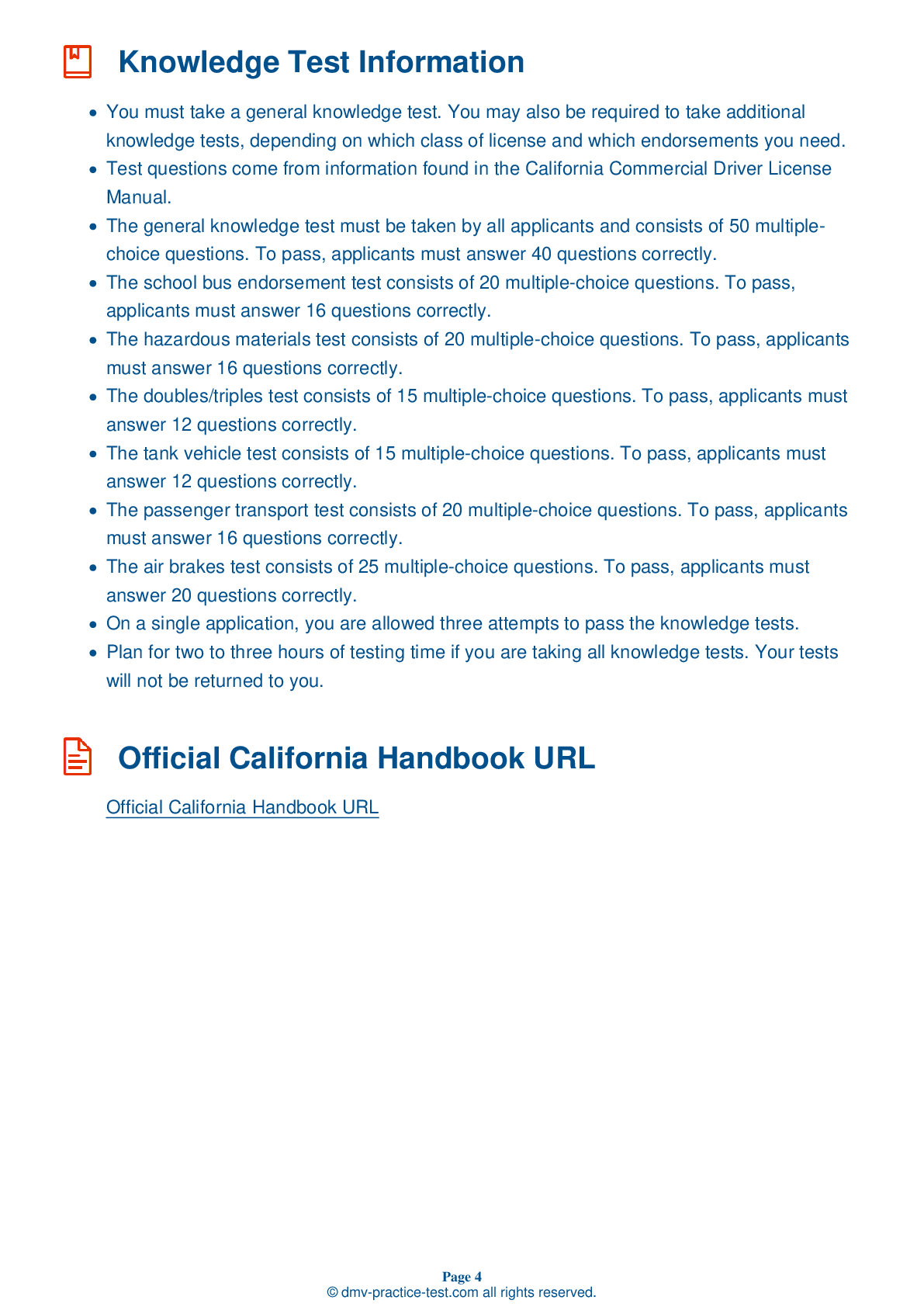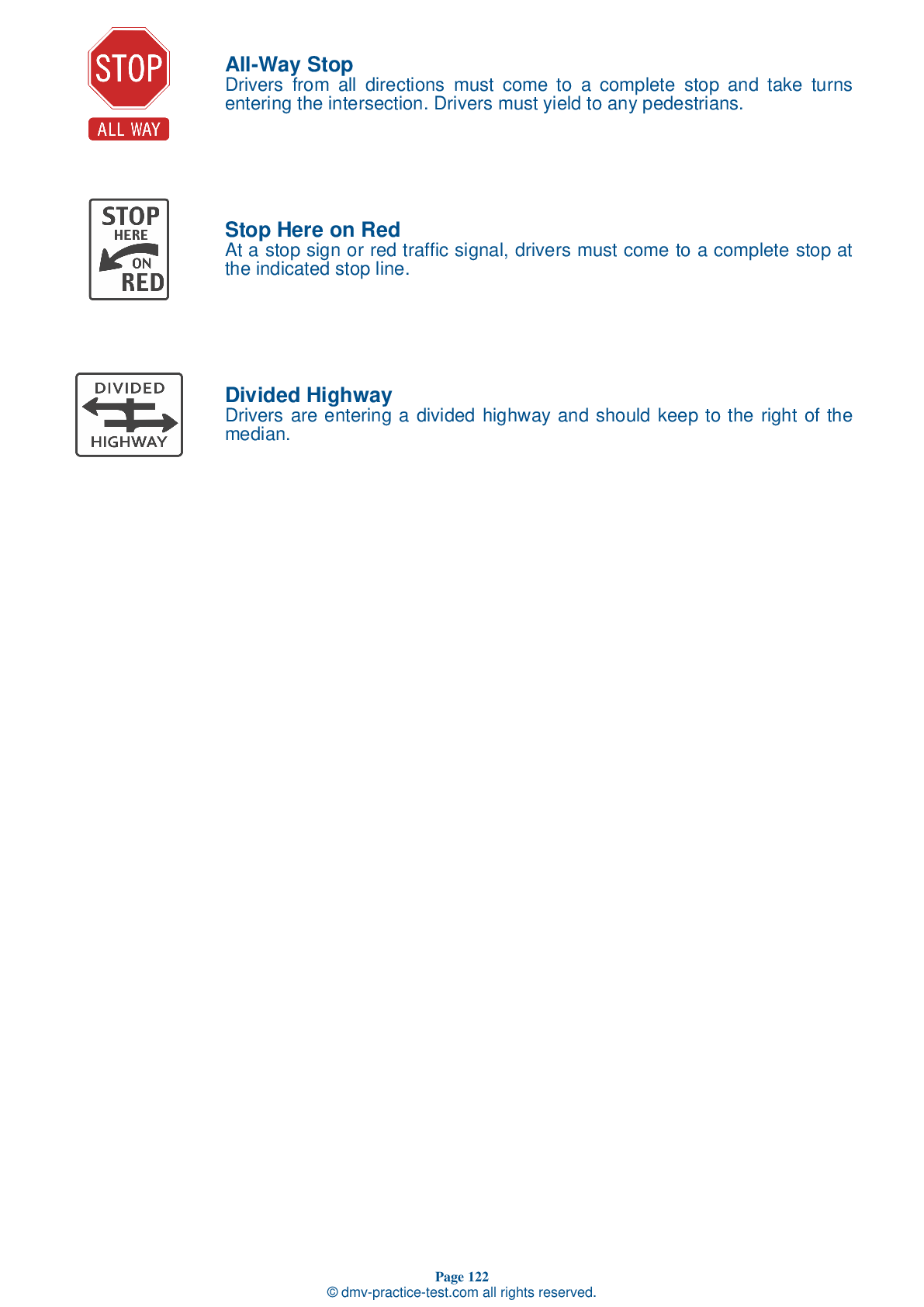Combination Vehicles Practice Test | California 2025 #2 Page 3 of 3
Train for FREE online with our California CDL combination vehicle test. The official exam test consists of several obligatory parts, with all of them checking your knowledge of different blocks of road rules. If you need to obtain a CA combination license in 2025, practice as much as possible. Free sample tests published on our website will help you check and improve your knowledge and boost your grades. Please bear in mind that DMV requirements for issuing a combination license may vary from state to state.
15 . The service air line is often controlled by the foot brake and is attached to the ____ valves.
The service air line carries air and is controlled by either the foot brake or trailer hand brake. The service air line is attached to relay valves, which allow the trailer brakes to be applied quickly.
16 . To find out if a vehicle that was built before 1998 has an Anti-Lock Braking System (ABS), you can:
If you are operating a vehicle built before 1998 and are unsure if the trailer has an Anti-Lock Braking System (ABS), you can check under the trailer for wheel speed sensors coming from the back of the brakes.
17 . If you use the trailer hand brake while your trailer is skidding, it will:
If you are experiencing a trailer jackknife, you can help your tires regain traction by releasing the brakes. Using a trailer hand brake while experiencing a skid will only cause the skid to continue.
18 . When backing up your tractor while coupling it to a trailer, the trailer brakes should be:
Correctly following the steps to couple and uncouple trailers is vital to safely operating a combination vehicle. Before backing your tractor under the trailer while coupling, make sure your trailer brakes are locked.
19 . If the emergency air line loses pressure:
The emergency air line controls the emergency brakes on a combination vehicle. A loss of air pressure in the emergency line will cause the emergency trailer brakes to activate.
20 . Avoid needing to make sudden lane changes by:
Making a sudden lane change can be dangerous when driving a combination vehicle. Avoid the need to make a sudden lane change by looking down the road for upcoming obstacles that will require you to change lanes.
See the exact questions that will be on the 2025 California DMV exam.
99.2% of people who use the cheat sheet pass the FIRST TIME
Lillian MCcranie explains how our CDL study guide was helpful in passing the exam and recommends it to everyone.
Cameron tells us how he purchased the CDL exam, and found it to be a useful tool which helped him pass the exam and find a job.



